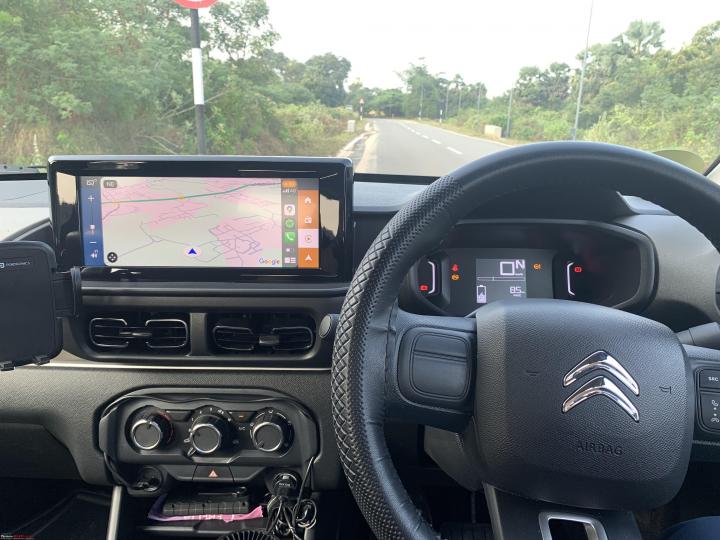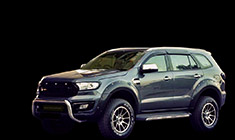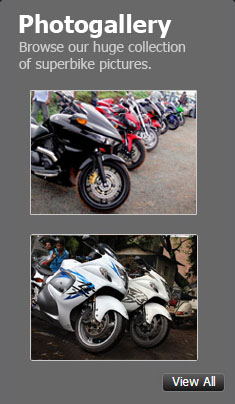News
Chose the Citroen eC3 over the Tiago EV & Comet: My experience so far
Tiago EV was certainly the hot hatch of the lot. Good dynamics, blisteringly fast in sports mode and a reasonable dashboard and display.
BHPian mathewanil recently shared this with other enthusiasts.
Speculation and criticisms, that what I’ve seen over numerous posts in Team BHP about this car that was launched about a year ago. Hi, I’m new to Team BHP and here is what I think of the Citroen eC3 after 3 months of ownership and clocking nearly 5500 km. I was in the market for a second car for daily commutes to work and an occasional weekend run. And I did the TDs like most buyers with a limited budget of around 13 L. The only contenders in the market were Tiago EV, MG’s Comet and Citroen’s eC3. I drive an average of 1200- 1500 km a month with daily commutes of 30 km to work and some local weekend trips.
My TD experience of the 3 aforementioned cars
Tiago EV was certainly the hot hatch of the lot. Good dynamics, blisteringly fast in sports mode and a reasonable dashboard and display. And like all budget cars in this segment there were always features that were desirable. To me the loud creaking sounds in the dashboard in the TD car, the lack of a spare wheel and limited boot space was a downer and reasons enough to not buy it. The lack of durability and some niggles are known with a few Tata cars and my talks with other local owners about their service experience in our place further confirmed my decision to not go for this model.
The MG’s Comet, small and funky looking with small 12-inch wheels and a 2-door configuration was great to look at. The interiors looked top notch and had a dash with the look and feel of an Apple device. My test drive experience however was not great. I do about 25 km of highway drive every day and while doing the TD on the highway, the car was buffeted by winds generated by passing heavy vehicles and large SUVs. The small wheels did not inspire confidence and the slow speed drive through rough terrain was not great either. This, along with virtually no boot space to talk of, meant this was not the car for me either.
The Citroen eC3 was the last car that I test-drove. What I immediately liked was the sense of space within the cabin, the no-fuss drivability and its fantastic suspension. The boot of 315 L is great and usable, and the presence of a spare wheel was reassuring. Sure, the dashboard display looked bare, and it lacked the bells and whistles of a modern car, but (IMO) the general fit and finish were far better than the TIAGO. There was the odd fuel lid at the back that was sealed, a key-start ignition, small IRVM and stick-controlled ORVMs. But having owned 4 other cars, I realise that the modern solutions to these are desirable traits but not essential. And although there were lots of negative comments and blogs about fast charging and the lack of liquid cooling for the batteries, almost 99 percent of these were by people who did not own this car.
To allay my fears the dealership shared a few phone numbers of other owners who had bought this car and I’m grateful I got to speak to a few of them before my purchase. So finally, I took the plunge and booked the “Feel” variant in monotone silver-grey car with “Vibe pack” (orange highlights on the ORVMs and around the back reflectors and front fog lamps). I also got a rear-view camera fitted as an accessory by the dealership. The car was registered and delivered to me in about a month. I purchased my own insurance and fast-tag as I already owned a Skoda Kushaq and knew that a little market research brings down the premium on PV insurance and any bank can provide multiple fast-tags linked to a single wallet.
Ownership experience of the eC3
The car is 3 months old. I’ve nearly done 5500 km already and here is what I think about owning an eC3.
Driving my eC3
I commute 30 km daily and I charge the car once in 5 days. At that point, I would have done 150 km and would have about 25 to 30 percent of charge remaining. As I come from an ICE car and drive this one like the Kushaq, I consistently get about 200 km mileage for a full charge. That’s roughly 2 km to a percent of charge. Most of my commute is on the highway. I drive at speeds between 90 to 95 km/ hr and occasionally I cross triple digit speeds while overtaking and a few times have even consistently driven it at 107 km/ hr (which is also it’s capped top speed). I always drive with my windows up and the AC on. It’s agile, the steering weighs up nicely with increasing speed and surprisingly has limited body roll for a tall design like this. The acceleration is linear and robust till about 60 km/hr and fades away a bit after that. All ICE powered cars and bikes are left behind at the turn of the signal at every traffic junction, leaving a few bewildered drivers in my rear-view mirror and a suppressed grin on my face.
The suspension is fantastic and driving on rough terrain is a breeze. This, added with relatively wide 195/65 R15 wheels makes for great driving. The car is quiet like all EVs with the occasional purr of the cooling system that kicks in every now and then and the constant drone of the AC compressor when on, all of which are heard only when outside and near the bonnet. Being a quiet car means honking more often to remind other road users of my presence. There is a loud beep from the dash when the motor goes on with the display saying “ready” to remind us that the motor has started.
The NVH levels within the cabin are quite good but tyre and wind noise is quite prominent after 80 km/ hr. It has great highway manners, good steering control, fantastic suspension and (to me and my wife) well-contoured seats. It lacks the variable regen that’s there on other EVs but has an ECO mode that adds regen-like dynamics to the driving. To me, it means, near single-pedal driving with less braking in regular city driving and the ability to slow down at corners or for speed breakers and while driving down steep inclines by just taking off the foot of the throttle. It has a tight turning radius of 4.9m; however, the toggle switch is not fast and the flick from reverse to drive is a slow affair. The ground clearance of 170mm is more than adequate, a cm less than its ICE counterpart.
The battery pack under the floor and the engine (motor) room is covered with a casing for protection and the ground clearance has been maintained inspite of this. The car has a creep function in D mode, but no hill hold control. It does roll back a bit before creep takes over. This will either require a lightning-fast brake-to-throttle shift or the use of the hand brake. I've noticed with the use of the parking brake, the car shifts to a neutral-like mode and although it's in “drive” it needs a little more throttle input before you release the hand brake. This makes it a bit difficult with traffic on an incline. The reverse mode also has creep however less intuitive than the drive. It has a kind of all-or-none throttle response which also could have been better. Driving upslope in reverse is not easy and not recommended with this setup.
Features and gizmos and the lack of it:
The feel variant comes with a 10-inch infotainment system. It’s ok, boasts of wireless phone connectivity but not the best in the market. There are a few periods of loss of phone mirroring, and it takes a while to reconnect to my iPhone. Occasionally the screen freezes and then it's up and running after a bit. The sound quality is decent but not over the top.
The dashboard display looks like it is taken from 1980s arcade game consoles and has a pictorial representation of the battery percentage, the power usage and the speed and the drive mode quite clearly. The range, odo, tripmeter and battery percentage can only be seen by pressing a toggle switch on the display, forcing you to put your hands through the steering wheel while driving. And whoever designed that needs a demotion and has to be sent back to design school. To its credit, whatever is on display is crisp and large enough for me to read with my old man, presbyopic eyes without bifocals.
The ORVMs have manual toggle controls and I’ve added blind spot convex mirrors on top of them. I’m fairly able to do good parallel parking, even in tight spaces aided by the ORVMS and reverse cam. I guess three decades of driving and using barebones cars in the past has helped. The lack of powered mirrors although not a deal breaker would certainly be desirable while adjusting the passenger side mirror for some tight parking. The C pillar is quite wide and is a big blind spot if you are used to reverse parking by looking over your shoulder. The IRVMs that now boasts of manual dimming is minuscule for my use and I’ve added a wider convex mirror on top for my use. I’ve done that for my Kushaq too.
The lack of climate control is a bummer. I’ve bought my car in October and the morning drives are a bit chilly. The temperature control knob is usually set at the first red line during early morning drives and the onboard heater (yes! It actually has one) kicks in immediately. Turning the thermostat control back a notch to cool, the point between the blue and red dashed lines, immediately switches on the air conditioner and kind of makes the cabin cool immediately. It’s ok for the rather hot summers as the car cools rather quickly but it’s not great when it’s cold outside and you would like to find the just the right temperature that’s comfortable for you. I guess I’m spoilt by the Kushaq which has climate control and can adjust the temperature in increments of 0.5 degrees. Dare I say the cooling capacity of the eC3’s AC is more robust and quite fast and effective. This added with the light tint on the windowpanes makes for a comfortable cabin even after being parked out in the sun.
The AC however lacks the HEPA filter that I’ve seen in European cars. In very polluted areas, some chemical smells have drifted through into the cabin, even in recirculation mode of the AC and that’s forced me to buy a low-end, cabin air purifier that’s solved this problem. The lack of a rear defogger and wiper is also troublesome during rains and foggy days. I wonder why these are considered optional on hatchbacks. The stock front windshield wipers are about the same quality as the ones I had on my Maruthi Omni from a couple of decades ago and I’ve recently replaced them with BOSCH Aerotwin blades which has made a huge difference while driving in rain. The headlights, DRLS and indicators are good and like all OEM Halogen setups just short of optimal.
Home (AC) charging
I spent an additional 50 K for the purchase and installation of a wall charging unit by Zevpoint. This was installed by a local electrician to one of the pillars in our parking lot of the apartment where I stay. This included a 6 sq mm 3 core wire that was brought from the main power control room for about 40 meters, an extra power meter to log my power consumption., a dual pole MCB switch, a SPD (spike protection device) and and a RCBO switch to prevent back-current flow to the circuit. These are akin the wall unit provided by TATA to connect the portable 3.3 KW charger to. Citroen has now included this as standard for all eC3 vehicles and that is why there has been an increase in price of ₹ 11,000. The Zevpoint charger cost me around 30 K during an Amazon sale and although it can charge at 7.2 KW, this car will charge only at 3.5 KW/hr. So, adding a 7.2 KW charger has not significantly reduced my charging time as compared to the portable unit that came bundled with the car. This I realised after installing the wall charger from Zevpoint and although I could have returned the charger and got a full refund, I decided to keep it.
Since my parking is on the ground floor of an apartment complex, the charger can be locked by an onscreen password to prevent misuse or accidental electrical injury. The charger also allows delay start to allow the battery to cool down before initiating charging if needed. It logs the power consumed at each charge cycle and also the cumulative power consumed over time. The current output can be varied on the charger if needed and I’ve seen it charge at a constant 3.5 KW output which is marginally faster than the portable charger that came with the car. In my weekly charge cycle of bringing the car from about 25 percent to full requires about 8.5 hrs of overnight charging. Although the dealership recommends that the car can be charged with any socket with a 15-amp output, it is recommended that the gauge of the wires used, the quality of the socket and switches are up for the constant load for 8 to 10 hrs.I noticed the switchboard warming up during AC slow charging at my parent’s house which was promptly solved by a small table fan throwing cool air at it.
DC fast charging:
This is where it gets interesting. For all the criticisms that are written in the blogs by people who do not own this car, my DC fast charging experience has been fantastic. The only rider is that I’ve been doing this testing from October to December, and I’ll update my summer experience after a few months. I stay in Vellore, Tamil Nadu with an ambient temperature of 33 to 35 deg C during the day in winters and I’ve done a couple of Bangalore trips (240 km from where I am), a ride to Chennai (130 km) and a long trip to Kerala (600km one way) and further trips within Kerala where day temperatures were considerably higher. The trip to Bangalore required a single top-up on the way and then AC charging (to full) at my Parent’s home. The chennai trip did not require a top up on the way and I reached the destination with nearly 45 percent of charge. It required one top-up at the destination, and I was able to drive all the way back. The longer trip could have been done with 4 top ups on the way, however being the first time, I decided to use multiple chargers to log in my experience. I did about 12 consecutive DC charges in all, including the to-and-fro commute and my local travel there over a week, clocking about 1600 km. Barring a couple of times due to charger issues, the charging worked like clockwork, and I had no issues whatsoever.
Since the car can charge at a maximum power of 30 KW/ hr its ideal to charge it with a DC fast charger that is rated 30 KW and above. I personally feel that the charging at 50, 60 and 80-KW charging stations were the least time consuming because the 90 amps current output was easily achievable by these chargers. The charging is fast till it reaches 70 percent SOC (30KW/hr), drops a bit after that to 24 KW/hr till it reaches 80%. After that it charges at a rate of 16 KW/hr till 90% SOC and beyond that at 6KW/hr and later 3 KW/hr. In simple terms the charging time doubles if we attempt to charge to full. Most charging stops took about 35 min, some a little longer. It did add about 3 hrs to my travel time and would be troublesome for a family with kids. I did these long commutes alone on the eC3 which irritated my wife, since she would have preferred me taking the Kushaq.
However, the long charge times was a forced rest during the journey and ensured I got more than my required share of power-naps during my travel. The bright side of long wait times to power up the car also meant meeting other EV owners, shared coffee or tea and some interesting stories. So, long commutes need a bit of planning, and the ideal target SOC should be around 80 to 85 percent if there is another charger in the next 140 to 150 km distance. I have downloaded all EV charging apps like Ionage, PlugShare, Charge Modd, Charge Zone, TataPower, Zeon, Relux electric, Shell recharge, Jio BP, GOEC and Statiq. I have also sourced the RFIDs from most companies that offer them, and I find that DC charging is just a plug and play affair after using one of these. I’ve used all the company apps/ RFIDs at least once. The rates of charging in Karnataka and Tamil Nadu vary between 25- 30₹( incl of GST) and about 12- 15₹ in Kerala.
Long trips will require you to save markers on your google maps to give you an idea where the next charger is. I did that painstakingly by opening each app and saving their corresponding charger locations on my google maps along the route that I was deemed to take. The query for “EV chargers” on Google maps is not perfect and does not have filters for the type of charger available. Ionage and PlugShare apps kind off fill in for this deficit but still have a long way to go.
Among the various companies that offer DC fast charging, Shell and Zeon are the most expensive with Relux coming a close third. Zeon has been the most consistent with excellent support and a good network, while Relux is ok, with not-so-great support. Jio BP is by far the cheapest in Karnataka but has poor penetration. Statiq has a poorer network but my experience with them has been good too. GOEC in Kerala is fantastic and my preferred service in Kerala. My overall cost of running has been ₹2.32/ km with a 60 percent fast charge and 40 percent slow charge cycle. It’s roughly 1.5 ₹/ km for slow charging (I pay about 8.4 to 8.9 ₹/ unit at home) and 2.93 ₹/ km for DC fast charging.
Claimed Efficiency and driving styles:
This car comes with a claimed efficiency of 320 km, but the range meter always shows 230 km on full charge. The real-world numbers are around 200- 210 km. My daily commutes consume about 110- 120 watts/ km. My long highway runs have consumed about 120 to 150 about 120 to 150 watts/km. And consistent max speeds consume about 180 watts/km. In real world figures it means driving between 85-90 km/hr and city drives will give a range of 205 km, 90 -95 km/ hr around 190 km and at max speeds around 160 km. Ya so if you are looking at range and keeping anxiety at bay, drive like your grandfather and keep the windows down and switch off the AC. Or drive like you own an ICE car having decided where your nearest fast charger is. The main power unit is a series motor whose torque delivery for accelerations and overtake is quick and robust, but the output has been tempered for linear accelerations and not outright performance. Quick overtakes are fun in the city but needs a bit more planning on the highway. I’ve almost always run on ECO mode, more for the braking effect while letting off the throttle than anything else. It lacks a brake light indication on decelerating (without pressing the brakes) and this would certainly be desirable in preventing tail-ending by other vehicles coming from behind.
EVs and software glitches:
These are common among EV cars and something the owners come to live with. There have been at least a dozen warning lights that have come up on the dashboard over the last 5000 km. Most of them disappeared in a few seconds and some after a start and stop of the ignition. To be fair, the service personnel at the Ramani dealership at Chennai have always responded to queries and have been reassuring. But the downside of this is that the sensors / warning system is unreliable, and an owner would never truly know when there is a problem.
Service
Citroen does have a small footprint in India. And if there is reason to not buy this car, this will be it. They started a new showroom at Vellore and service will be available shortly. I bought my car at Chennai and did take the car back once for a 2000Km check-up. The service center was crowded with C3 cars (ICE models) and although I reached there pretty early, I did get the car only be evening. There was some software update to do, a general inspection and a water wash. Some accessories like the steering wheel cover and sill plates needed some refitting since the first time, these were done sub-optimally.
In summary, here is what an ideal EC3 should have:
- Rear defogger and wiper
- Climate control AC
- Cruise control
- Brake light warning on throttle off
- Better stock wipers
- A software update for their infotainment
If you can overlook these, it’s a fantastic car to drive, with great dynamics, responsive throttle, superb ground clearance, a good boot with a spare wheel and a quiet and roomy cabin.\
Read BHPian comments for more insights and information.
















.jpg)




.jpg)




